Hanoi, the heart of Vietnam, is not only a dynamic capital but also a living museum of national history and culture. Throughout thousands of years of nation-building and defense, this land has preserved countless heroic stories and glorious imprints of feudal dynasties. A journey to visit historical sites in Hanoi is more than just a simple tour; it is an opportunity for every Vietnamese person to reconnect with their roots, discover unique cultural and historical values, and foster national pride.
Thang Long Imperial Citadel: Witness to History Through Dynasties
When mentioning historical sites in Hanoi, the Thang Long Imperial Citadel, a majestic symbol of Vietnamese power and culture for centuries, is a must-visit. Built in the 7th century, the Citadel was not only the political center of Dai Viet through the Dinh, Tien Le, Ly, Tran, Le, Mac, and Nguyen dynasties but also a testament to the brilliant development of architecture and royal court art.
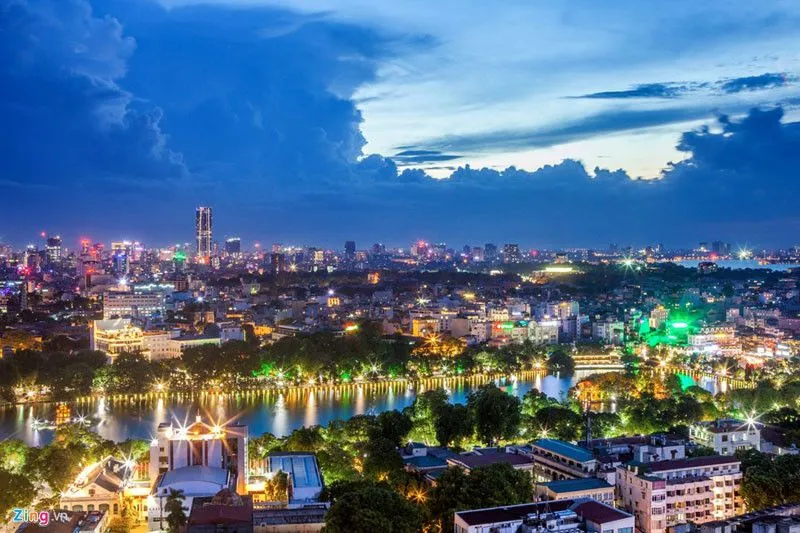
The vast architectural complex of the Thang Long Imperial Citadel includes many historically significant structures such as the Hanoi Flag Tower, Kinh Thien Palace, Doan Mon Gate, Hau Lau Pavilion, and numerous valuable archaeological relics. Every brick and tile here contains stories of past dynasties and significant historical events of the country. Visitors exploring this historical site in Hanoi will admire the unique architectural beauty, learn about the process of citadel construction, and the ancient royal court life.
The Thang Long Imperial Citadel is not just a simple historical site but also a vibrant cultural space. It regularly hosts cultural and artistic activities, exhibitions, and historical reenactments, attracting a large number of tourists and locals. With its exceptional historical, cultural, and architectural values, the Thang Long Imperial Citadel has been recognized by UNESCO as a World Cultural Heritage Site, becoming an unmissable destination when visiting historical sites in Hanoi.
Visitor Information:
- Opening Hours: 8:00 AM – 5:00 PM daily (except Mondays)
- Entrance Fee:
- Adults: 30,000 VND/person
- Students, senior citizens: 15,000 VND/person
- Free: Children under 15 years old, individuals with meritorious services to the revolution
Temple of Literature – Quoc Tu Giam: A Thousand-Year Symbol of Culture and Education
The Temple of Literature – Quoc Tu Giam, Vietnam’s first university, is one of the historical sites in Hanoi imbued with cultural and educational significance. Built in 1070 under the Ly Thanh Tong dynasty, the Temple of Literature is dedicated to Confucius and Confucian sages. In 1076, King Ly Nhan Tong established Quoc Tu Giam behind the Temple of Literature, marking the birth of formal education and the training of talents for the nation.
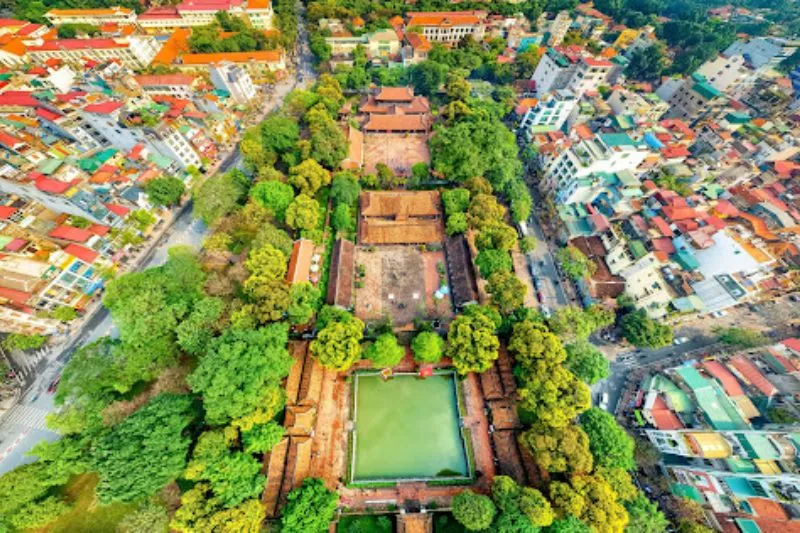
When visiting the historical site in Hanoi, Temple of Literature – Quoc Tu Giam, visitors will admire the ancient, solemn architecture imbued with Confucian spirit. The Temple of Literature complex is divided into several areas with unique architectures such as Van Lake, the worship area, Thai Hoc area, and Giam garden. In particular, the 82 Doctor Steles placed in the Temple of Literature are invaluable treasures, recording the names of those who achieved the highest ranks in the imperial examinations of the past. Each stele is not only a historical testament but also a symbol of the tradition of studiousness and respect for teachers in Vietnamese culture.
The Temple of Literature – Quoc Tu Giam is not only an important historical site but also a spiritual and cultural destination attracting many tourists and students. Every exam season, students often come here to pray for good luck and success in their studies. The New Year’s Calligraphy Festival at the Temple of Literature is also a beautiful traditional cultural event, attracting many locals and tourists to participate.
Visitor Information:
- Opening Hours:
- Summer: 7:30 AM – 5:30 PM
- Winter: 8:00 AM – 5:30 PM
- Entrance Fee:
- Adults: 30,000 VND/person
- Students, senior citizens: 15,000 VND/person
- Free: Children under 15 years old
One Pillar Pagoda: Unique Architecture, Symbol of Hanoi
The One Pillar Pagoda, also known as Dien Huu Pagoda, is one of the most unique and famous historical sites in Hanoi. This small pagoda was built in 1049 under the reign of King Ly Thai Tong, bearing the distinct mark of Vietnamese Buddhist architecture. Legend has it that the pagoda was built based on King Ly Thai Tong’s dream, in the shape of a lotus flower rising from the water.

When visiting the historical site in Hanoi, One Pillar Pagoda, visitors will be amazed by the one-of-a-kind architecture of the pagoda. The pagoda is placed on a single stone pillar in the middle of a green lotus pond, creating a serene and romantic scene. The pagoda’s architecture resembles a blooming lotus flower, symbolizing the nobility and purity of Buddhism. Despite many historical events and wars, the One Pillar Pagoda still retains its unique architectural beauty and profound spiritual and cultural value.
The One Pillar Pagoda is not only a famous historical site but also an important spiritual destination for Hanoi residents and visitors from all over. Coming here, visitors not only admire the unique architecture but also pray for peace, luck, and learn about the history and culture of Vietnamese Buddhism.
Visitor Information:
- Opening Hours: 7:00 AM – 6:00 PM daily
- Entrance Fee:
- Free: Vietnamese citizens
- Foreigners: 25,000 VND/person
Hoan Kiem Lake and Ngoc Son Temple: The Soul of the Capital
Hoan Kiem Lake and Ngoc Son Temple are the heart of Hanoi, a complex of historical sites in Hanoi and famous scenic spots. Hoan Kiem Lake, also known as Sword Lake, is associated with the legend of King Le Loi returning the precious sword to the Golden Turtle, symbolizing the nation’s aspiration for peace and independence. Ngoc Son Temple, located on Ngoc Island in the middle of the lake, is an ancient architectural work, worshiping national heroes and deities.
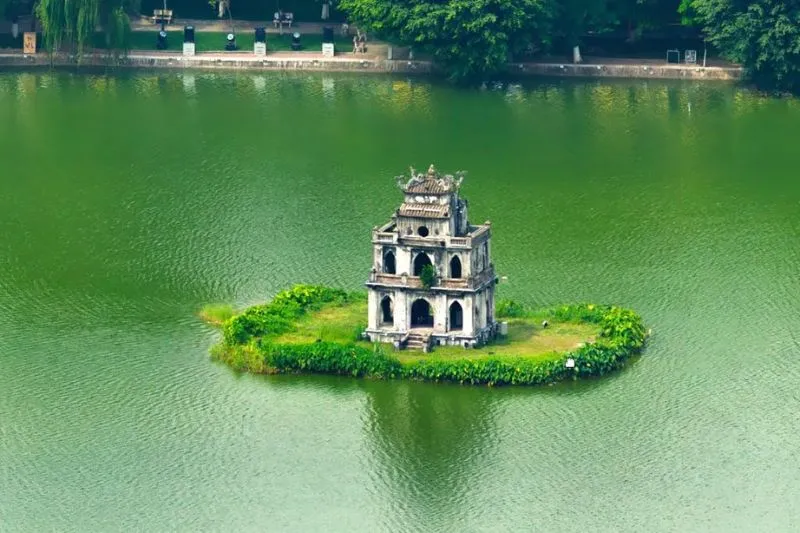
When visiting the historical site in Hanoi, Hoan Kiem Lake and Ngoc Son Temple, visitors will immerse themselves in a green, peaceful space in the bustling capital. The architectural complex around the lake includes the ancient Turtle Tower, the curved The Huc Bridge leading to Ngoc Son Temple, Nghieng Dai, But Tower… creating a harmonious, poetic picture. Hoan Kiem Lake is not only a historical site but also a place for cultural activities, entertainment for Hanoi residents and tourists. Especially every weekend, the Hoan Kiem Lake area becomes a pedestrian street, attracting a large number of locals and tourists to visit and have fun.
Visitor Information:
- Ngoc Son Temple Opening Hours: 7:00 AM – 6:00 PM daily
- Ngoc Son Temple Entrance Fee: 30,000 VND/person
Ho Chi Minh Mausoleum: The Eternal Resting Place of the Great Leader
The Ho Chi Minh Mausoleum is one of the most sacred and solemn historical sites in Hanoi. This is the eternal resting place of President Ho Chi Minh, the great leader of the Vietnamese nation. The mausoleum is built in historic Ba Dinh Square, where President Ho Chi Minh read the Declaration of Independence, giving birth to the Democratic Republic of Vietnam.
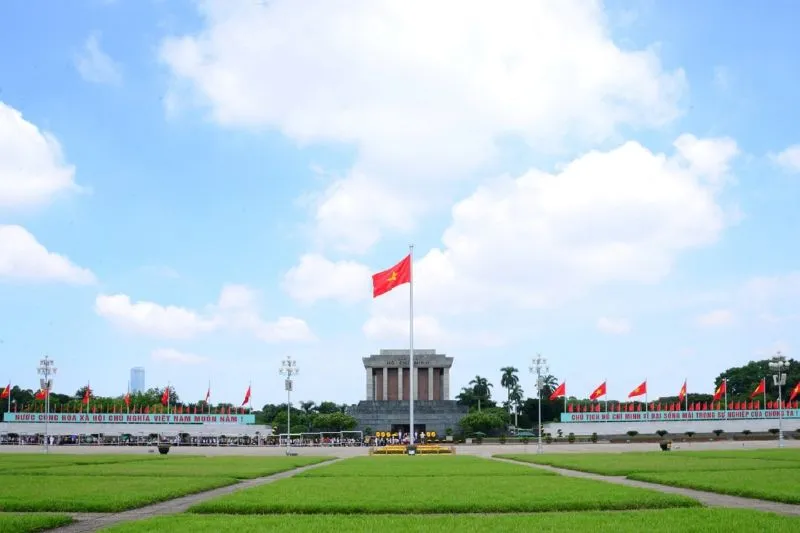
When visiting the historical site in Hanoi, Ho Chi Minh Mausoleum, visitors will feel a solemn and respectful atmosphere. The mausoleum’s architecture is imbued with Vietnamese style, combined with modern elements, expressing the deep respect and gratitude of the Vietnamese people towards Uncle Ho. Inside the mausoleum, President Ho Chi Minh’s body is preserved permanently so that compatriots nationwide and international friends can come to pay their respects. The Ho Chi Minh Mausoleum is not only a historical site but also a symbol of patriotism, solidarity, and the will for independence and self-reliance of the Vietnamese nation.
Visitor Information:
- Opening Hours:
- Hot season (April 1 – October 31): 7:30 AM – 10:30 AM (Sat, Sun, holidays: 7:30 AM – 11:00 AM)
- Cold season (November 1 – March 31): 8:00 AM – 11:00 AM (Sat, Sun, holidays: 8:00 AM – 11:30 AM)
- Closed every Monday and Friday (except for major holidays)
- Dress Code: Polite and discreet
- Note: Maintain order, do not talk loudly, do not bring recording devices
Thang Long Four Sacred Temples: Spiritual Shields of the Citadel
Thang Long Four Sacred Temples are a system of four sacred temples guarding the four cardinal directions of ancient Thang Long citadel. This is a unique feature in the spiritual culture of Hanoi people, reflecting the concept of harmony between humans and nature, between the material world and the spiritual world. The Four Sacred Temples include:
- Bach Ma Temple (East Guardian): Dedicated to God Long Do, the guardian deity of Thang Long citadel.
- Voi Phuc Temple (West Guardian): Dedicated to Prince Linh Lang, son of King Ly Thai Tong, who contributed to fighting invaders and protecting the country.
- Kim Lien Temple (South Guardian): Dedicated to Cao Son Dai Vuong, the mountain god guarding the South.
- Quan Thanh Temple (North Guardian): Dedicated to Huyen Thien Tran Vu, the god guarding the North, warding off evil spirits.
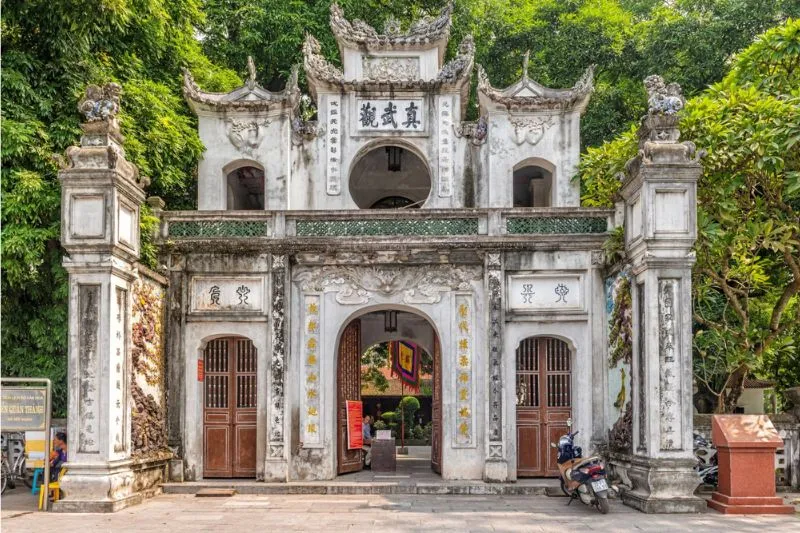
When visiting historical sites in Hanoi belonging to Thang Long Four Sacred Temples, visitors will discover ancient temples with unique architecture, imbued with folk culture. Each temple has its own history and legends, reflecting the beliefs and spiritual life of Hanoi people through the ages. During festivals, especially Tet Nguyen Dan, people often come to the Four Sacred Temples to pray for peace, fortune, expressing their sincerity and wishes for a peaceful and lucky new year.
Hoa Lo Prison: Painful Testimony of War
Hoa Lo Prison, also known as “Maison Centrale”, is a historical site in Hanoi bearing the painful mark of the war and colonial period. Built by the French colonialists in the late 19th century, Hoa Lo was once a place to detain thousands of Vietnamese revolutionary soldiers. This place was dubbed “hell on earth” due to the harsh and brutal detention regime of the French colonialists.
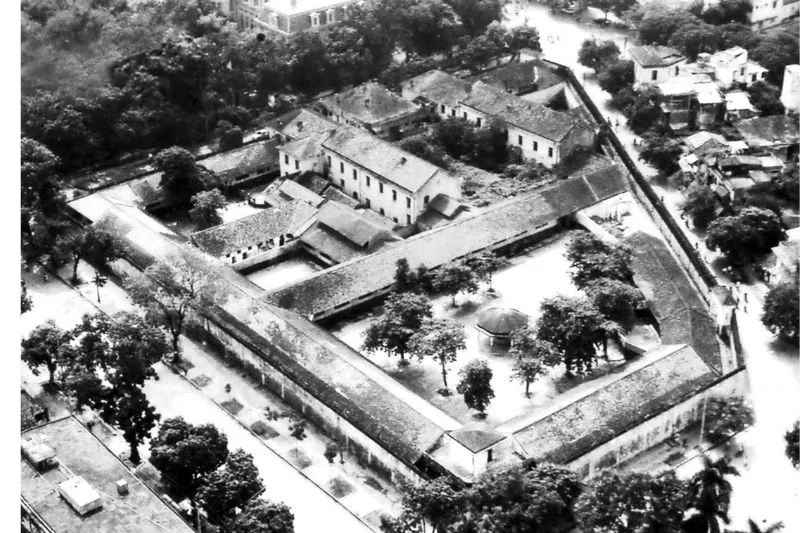
When visiting the historical site in Hanoi, Hoa Lo Prison, visitors will witness artifacts and images recreating the harsh life of political prisoners, while admiring the resilient and indomitable fighting spirit of revolutionary soldiers. Hoa Lo is not only a historical site but also a museum, an educational place about patriotism, revolutionary spirit, and the value of peace and freedom.
Visitor Information:
- Opening Hours: 8:00 AM – 5:00 PM daily (including holidays, Tet)
- Entrance Fee: 30,000 VND/person
- Ticket Incentives: Free and discounted tickets for certain subjects as prescribed
St. Joseph’s Cathedral, Hanoi: Gothic Architecture in the Heart of the Capital
St. Joseph’s Cathedral in Hanoi, or Nha Tho Lon Hanoi, is a unique architectural work, imbued with European Gothic style in the heart of Hanoi capital. Built in the late 19th century, the cathedral is not only an important religious site for the Catholic community but also a historical site in Hanoi and an attractive tourist destination.
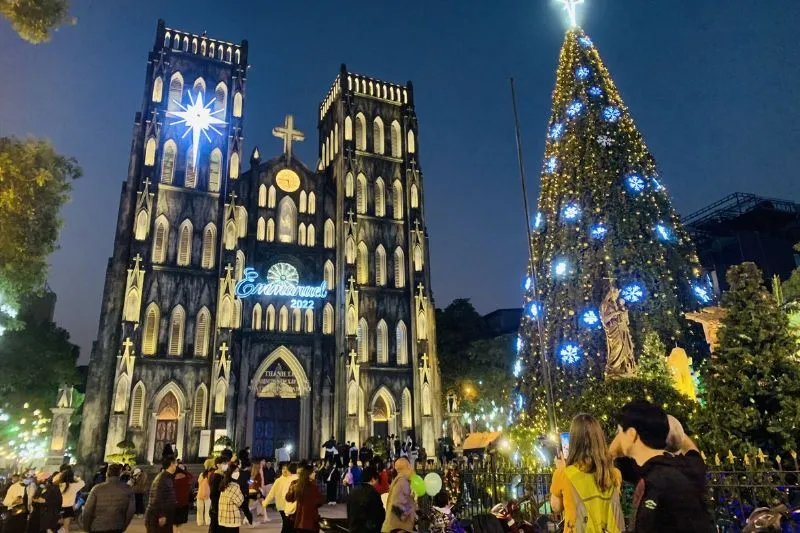
When visiting the historical site in Hanoi, St. Joseph’s Cathedral, visitors will admire the magnificent, ancient architectural beauty with soaring arches, colorful stained glass windows, and intricate carvings. St. Joseph’s Cathedral is not only a religious architectural work but also a work of art, a historical witness of Hanoi. The area around the cathedral is also a favorite destination for Hanoi’s youth, with many European-style cafes and fashion shops.
Conclusion:
Hanoi is not only a modern capital but also a historical and cultural city with countless valuable historical sites. A journey to visit historical sites in Hanoi is a journey to explore the past, learn about roots, and love the country and people of Vietnam more. Each site carries its own story and value, contributing to creating a diverse and rich cultural and historical picture of Hanoi. Come to Hanoi and experience and explore these unique historical sites to deeply feel the thousand-year-old beauty of the capital’s civilization.